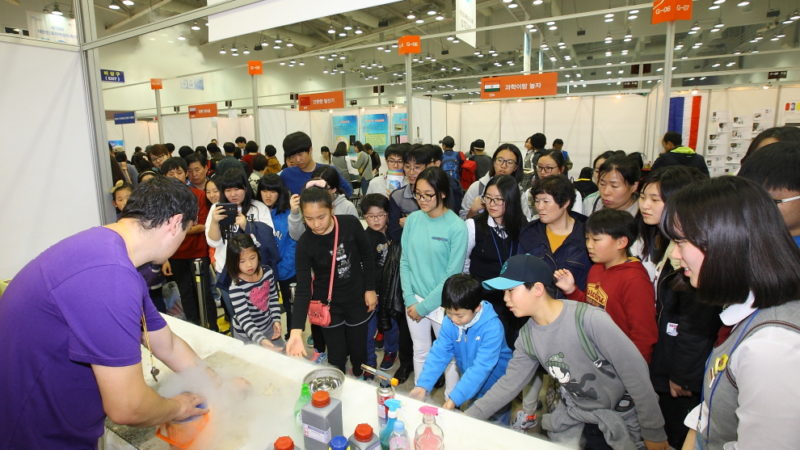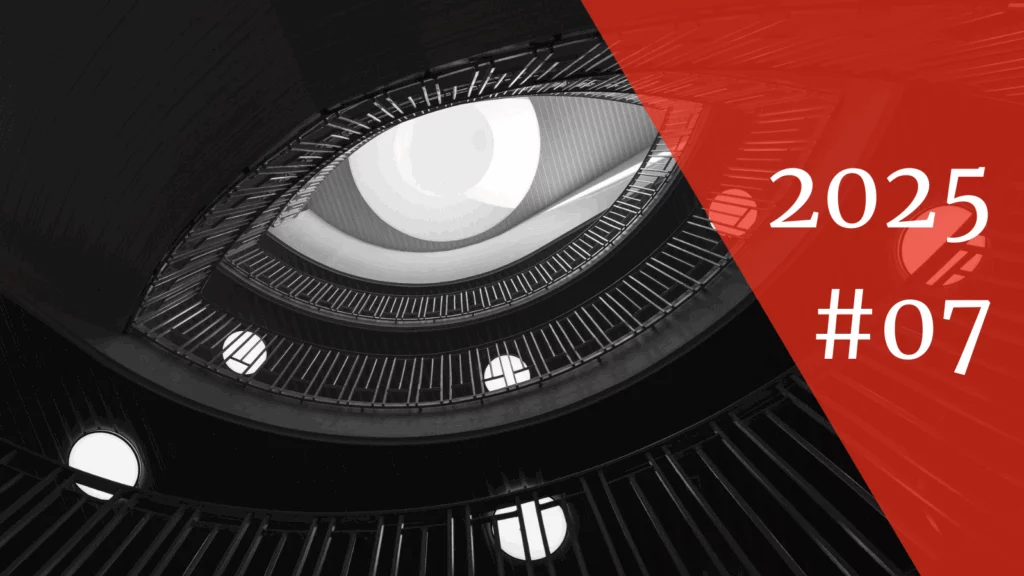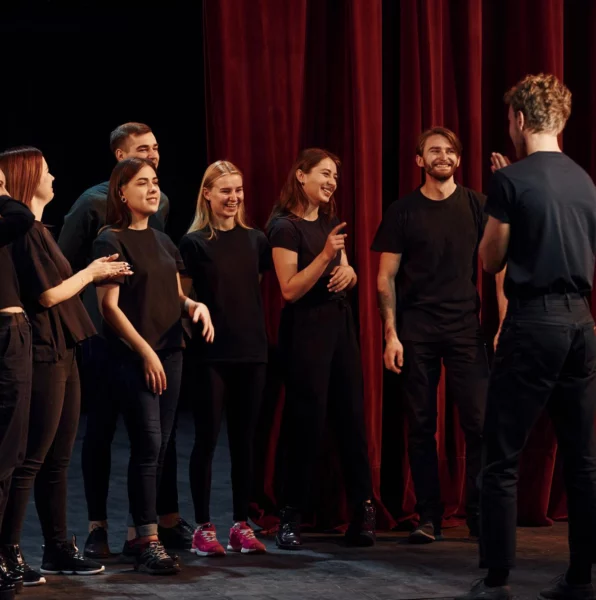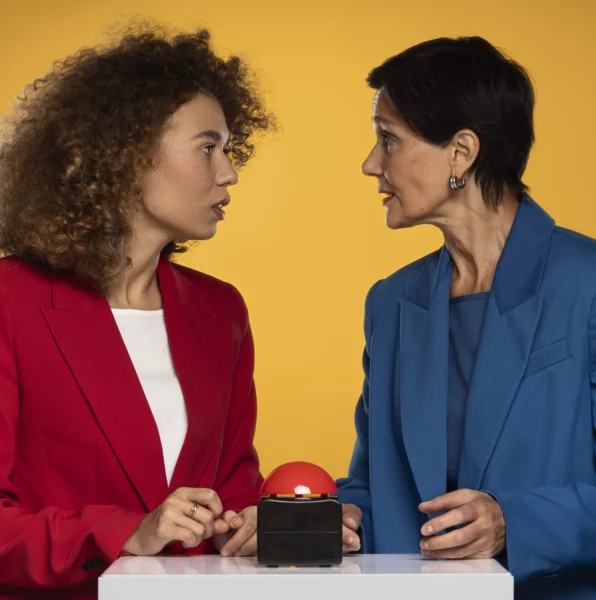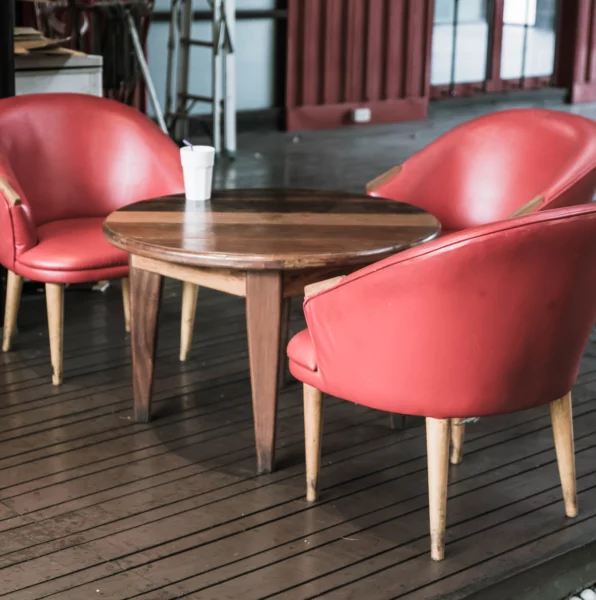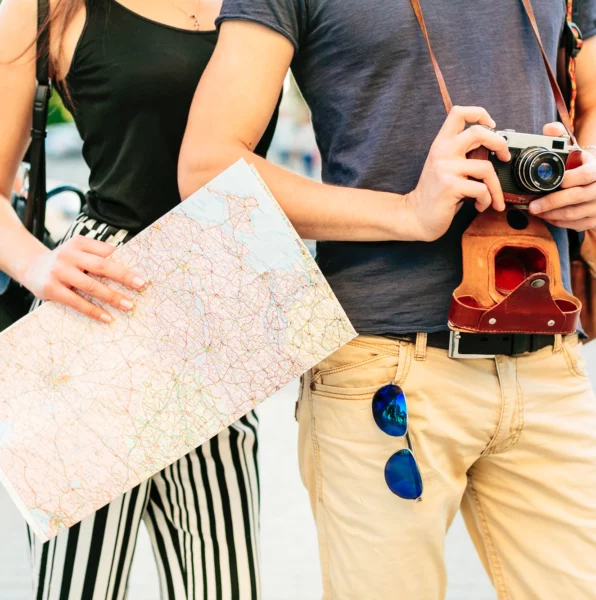In her second article JungSoon Lee from the Korea Foundation for the Advancement of Science and Creativity tells about the different Science Communication Formats they use in South Korea to get their scientific information to the public.
Science Communication Events in Korea
Science communication in Korea first started with the ‘All citizens in science’ movement led by the government and the Korea Science Foundation (KSF). The government thought it was very important to encourage citizens to think scientifically so they presented a lot of science content to the public. Sending out the ‘Science bus’ was one of these activities. These buses were full of experimental kits and books which went to all parts of Korea to be shown in schools to educate students about science. Along with this KSF brought in science documentaries and children’s television shows from other countries and added Korean subtitles before making them publicly available (1972~1900). In the 1970s and 1980s there weren’t many movie theaters in Korea so it was easy to attract the public with western science movies.
Meeting scientists
The first public science lecture series was opened for housewives in 1975. This was held on every 5th day of each month with scientist from five different fields giving lectures. The purpose of the lectures was to inform housewives about the science of everyday life which affects the lives of their families. Mothers were supposed to educate their children using this science information in their everyday lives. Another science communication format established after this era were the Science Ambassadors. These scientists were sent to rural areas of Korea where students have fewer opportunities to meet scientists. The program aimed to encourage scientists to engage in science communication with pupils and also to give pupils an opportunity to meet with actual science role models which might bring them to dream of being a scientist one day. About 1,000 scientists have been signed up for this program and more than 1,500 lectures have been delivered to schools.
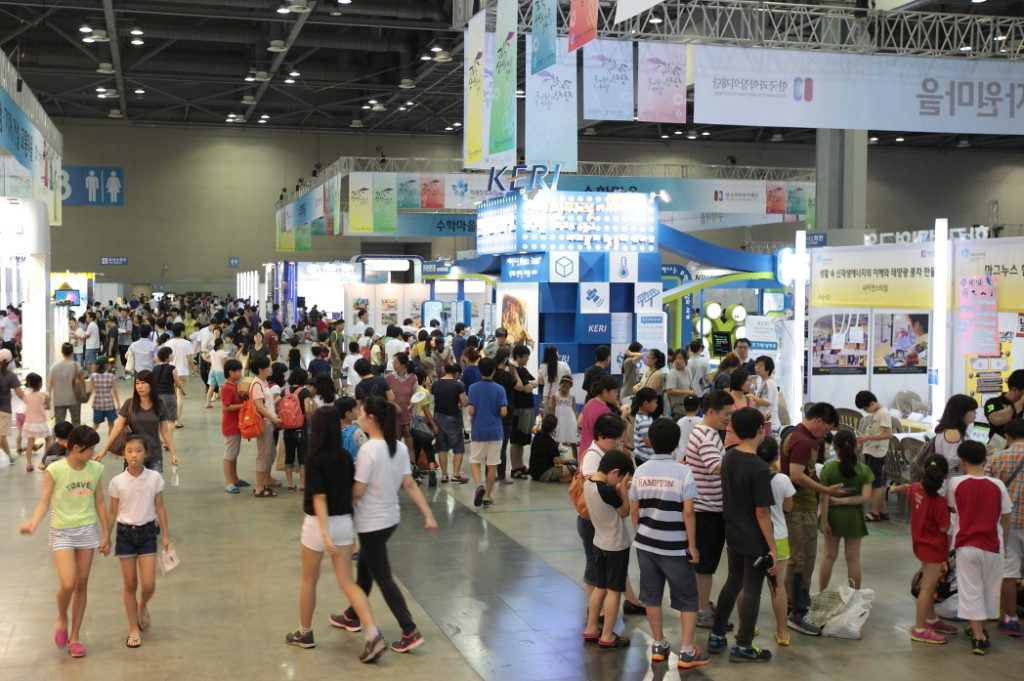
In a more interactive way of promoting science and giving the public opportunities to experience it, KOFAC (Korea Foundation for the Advancement of Science and Creativity) has been holding a national science festival called ‘Korea Science and Creativity Festival’ since 1997. It is the largest science festival in Korea and is an opportunity for people of all ages to take part in hands-on activities in science, engineering and technology. It is usually held in Seoul but every third year it is held in different cities to make sure that all students in Korea have opportunity to visit and participate in this national event. The Korea Science and Creativity Festival has gained recognition as a landmark comprehensive scientific and cultural event. It features not only exhibitions of state-of-the-art technologies, but also a wide variety of hands-on programs that allow visitors to experience science firsthand. The participants include children, college students, and professional researchers. At the 2016 festival, 163 organizations presented 288 programs and it was a great success with approximately 140,000 visitors attending over four days.
Science events have been usually a venue where scientific knowledge was delivered to the public, to educate and make them aware of scientific issues. Nowadays this trend is changing. People seek more entertaining events even in science communication. To meet this public demand, many science communicators and scientists try new formats which aim to to attract public interest and interact with the audience. Adult-only events, targeting people who have never been exposed to science since their high school graduation, have increased a lot.
Science communication by young scientists
In the past only scientists with a Ph.D. were asked to take part in science communication events. A lot of scientists volunteered for science communication, enriching scientific knowledge for students, but it wasn’t always enough. There was also a concern that the older-style lectures were boring and even made people to think of science as a difficult subject to understand. Times have changed and students and the public now expect more entertaining science content and events. Also young scientists in universities and science labs were eager to share their knowledge with others. In response to these changes, starting from 2015, KOFAC has collaborated with the British Council, Korea, to host ‘Famelab’ and this has brought a huge change in science communication. It has given young scientists the chance to show their research to the public and also on a global stage.
KOFAC didn’t just host Famelab but also extended the opportunity for young scientists to get involved in more science communication events. Science busking has been one of the most popular shows among other programs in science festivals and events. Science busking usually demonstrates basic science concepts using everyday materials like using toilet rolls to demonstrate engineering concepts or bubbles to demonstrate the properties of water. In Korea Young Famelabers come up with their own experimental shows based on their scientific background and they are invited to perform these at all kinds of science events and to schools as well. For all these communication events, KOFAC trains the young scientists at workshops 2-3 days in length where they learn how to communicate with students about science. The training aims to enable them to continue their activities as science communicators. The program has been working very well and young students who are dreaming of becoming a scientist one day are now also planning to become future science communicators. For the young science communicators themselves, they now feel more confident about their studies and research and communicating with the public.
Science communication for adults
Until recently, most of the science events in Korea were meant for students and young scientists and adults had been ignored. Socially there has been a great demand for entertaining programs and content for adults. In response to this trend, Korea has developed science programs for adults as well. The first ‘Science Evening’ was held in 2013, which was a workshop for adults introducing different science fields such as astronomy, food science, computer programing and so on. This 2-hour workshop was held four times a year. The invited speaker (a scientist or other specialist) introduced about the topic for 30 min. and then participants could experience with several hands-on programs just like in the workshops for school students.
In addition to this workshop, KOFAC has developed another program with more focus on entertainment. ‘Science Night Live (SNL)’ is a new format of science show for adults that started in 2015. It is an event where adults of all ages are invited to a free 2-hour science show which features science content designed for adults and also free drinks. At this event there were several different shows from different fields of science such as basic science, entomology, mathematics, and even magic. This entertaining show held in venues around Seoul has attracted an audience of more than 300 adults for each show which is quite large comparing to Science Evening. It is held twice a year and it is planned and performed by the young scientists from Famelab.
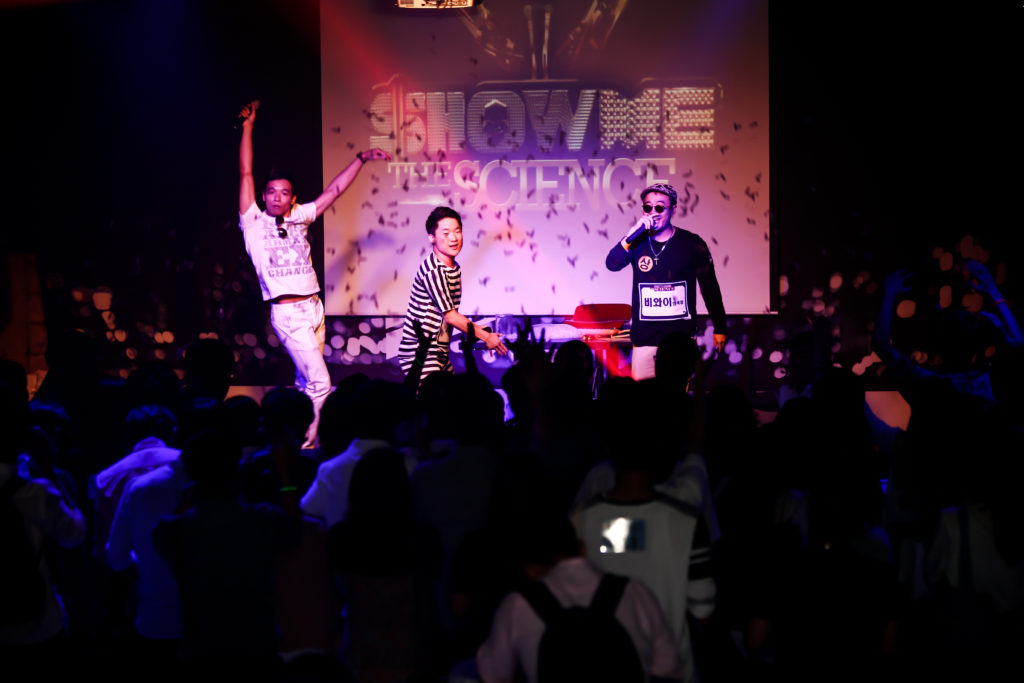
Interdisciplinary science communication
The Science and Creativity Annual conference has been held by KOFAC since 2011. This conference aims to open a venue for scientists, policy makers, science communicators/science journalists, science teachers and other interested parties to get together in one place to share their experience and ideas and to discuss issues and trends in science communication and education. The conference has attracted a lot of science teachers, communicators and new trend leaders from all over the Korea as well as from other countries. Specialists not only from science departments but also from education, media, business, and NGOs take part in this conference. Each year there is a theme related to science, communication, creativity and convergence.
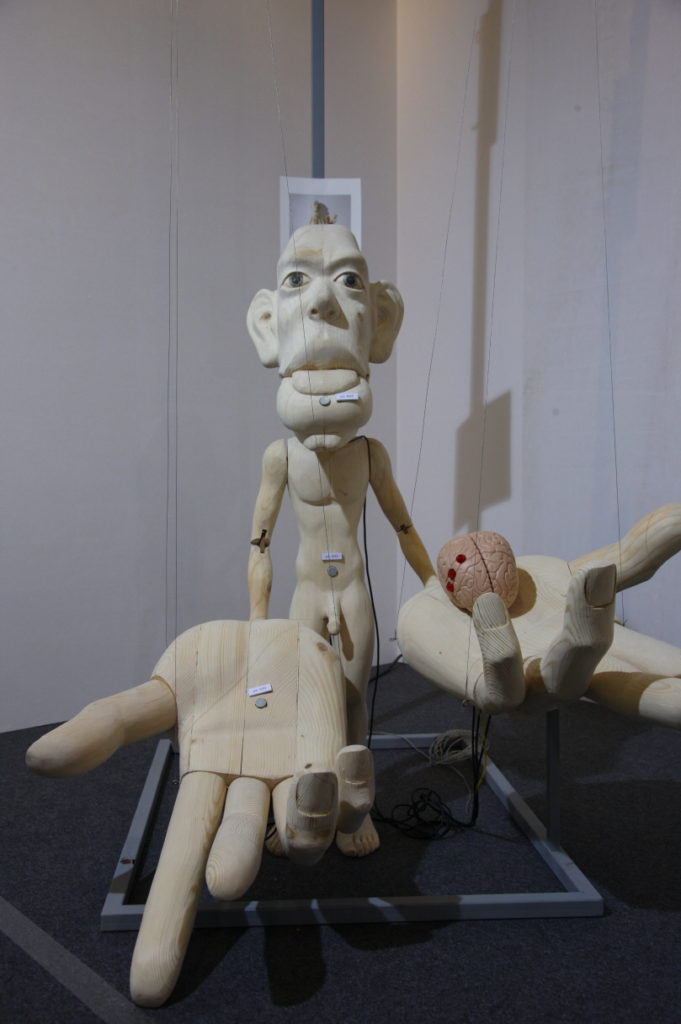
Last year, under the theme of ‘New technologies and Humanities in 4th Industrial Revolution’ the conference provided a venue where audiences could hear about culture, new opportunities and education in 4th revolution from experts from different areas. The 4th industrial revolution refers to technologies like robotics or artificial intelligence becoming embedded in society and the body (the first 3 revolutions are the steam engine, the combustion engine and the digital revolution). Sessions in various formats were prepared such as workshops, training sessions, forums and lectures. In previous years sessions were organized by KOFAC but last year we had sessions from different organizations and groups from Korea and other European countries. There were also some STEAM projects that connected STEM scientists with artists. The goal of these projects was to show science to the public in artistic way. About 10 teams came up with their own creation on science and art. These groups could be either a scientist or artist who could perform in both fields or a team consisting of scientists and artists working as a group. The creation either showed a scientific concept or issue in artistic way or used science principles or technology to make artworks.
As well as organising national science communication events, Korea always seeks better ways to communicate with the public by exchanging information with other countries and cultures. This is also the goal of my visit to Wissenschaft im Dialog, and I hope that my experience here will enrich science communication in Korea in some way and will inspire young communicators to be more passionate and proud of their work.
Gastbeiträge spiegeln nicht zwangsläufig die Meinung unserer Redaktion wider.
